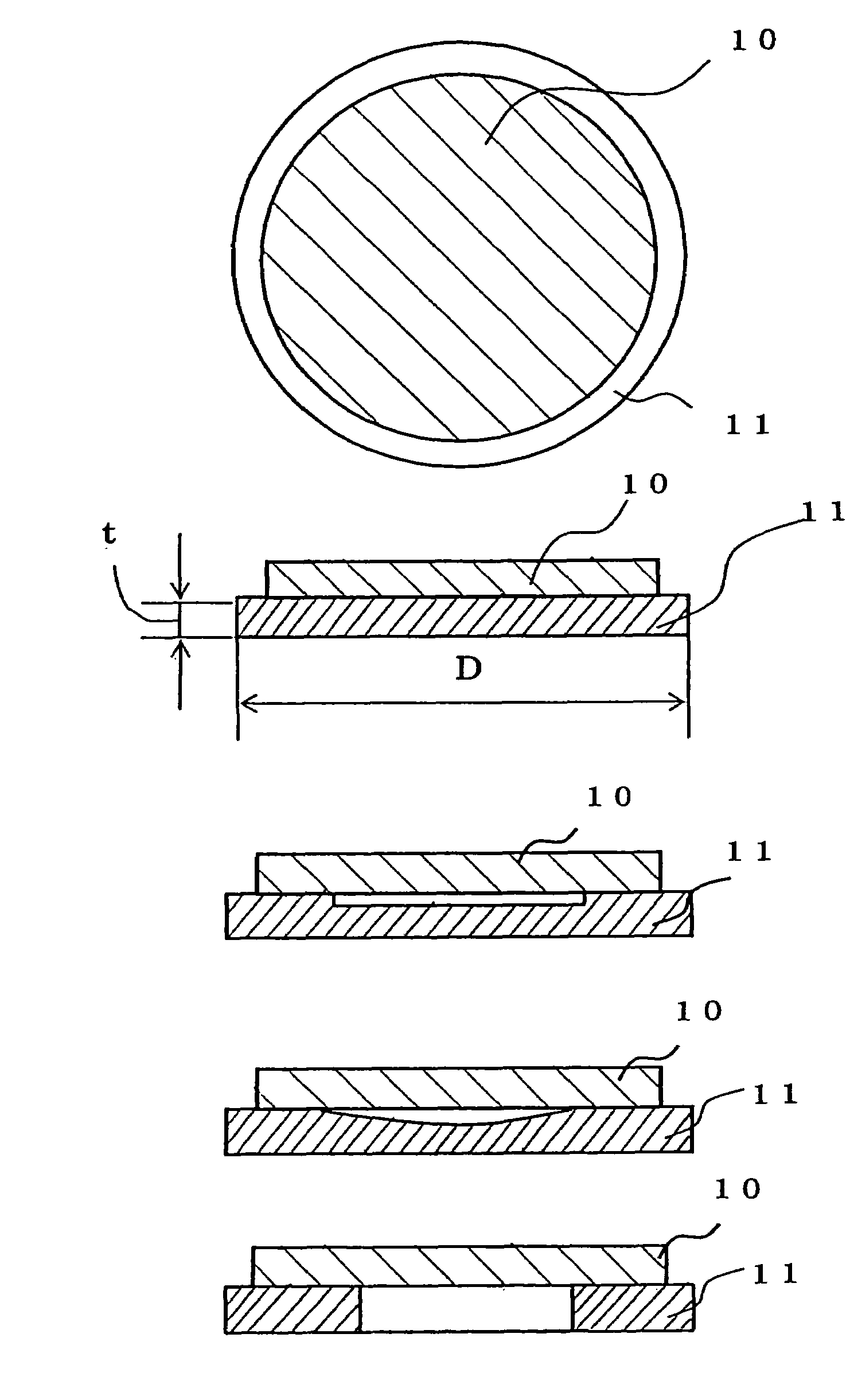Heat treatment jig for semiconductor wafer
a heat treatment jig and semiconductor wafer technology, applied in the direction of charging supports, lighting and heating apparatus, furniture, etc., can solve the problems of lsi device leakage current increase, deterioration of the planarity of the semiconductor wafer, and defective products that are not usabl
- Summary
- Abstract
- Description
- Claims
- Application Information
AI Technical Summary
Benefits of technology
Problems solved by technology
Method used
Image
Examples
example 1
[0090]In Example 1, the heat treatment jig having a plurality of protruded portions formed as shown in above FIG. 6 is made. To that end, as shown in above FIG. 7, silicon is used for substrate member and the jig is processed to have a disk-type structure comprising 304 mm diameter, 2.5 mm thickness, 0.04 mm planarity in the concentric direction and 0.04 mm planarity in the diametrical direction (step (a)).
[0091]On the disk thus obtained, the masking treatment with circular protective seals 18 of 8.0 mm in diameter is carried out at every 1.0 mm pitch (step (b)), the blast treatment B is applied to scrape off the disk surface by an amount of 50 μm (step (c)), and then the circular protective seals 18 are ripped off to finally reveal protruded portions 15, 16, 17 (step (d)).
[0092]In addition, by applying a benign blast treatment onto the whole surface of the disk-type jig 11 thus obtained, the heat treatment jig with surface roughness (Ra value) of 1.5 μm is completed.
[0093]By using ...
example 2
[0094]In Example 2, SiC coating is applied. Silicon is used for the substrate material and the jig is processed to have a disk-type figuration comprising 304 mm diameter, 2.0 mm thickness, 0.02 mm planarity in the concentric direction and 0.06 mm in the diametrical direction. Next, by applying the blast treatment, the surface roughness (Ra value) of 2.5 μm is secured, SiC coating is subsequently applied for 20 μm deposition in conversion, and a light polishing is provided in succession in order to remove the region of abnormal growth by SiC, followed by the blast treatment to obtain the heat treatment jig with final surface roughness (Ra value) of 1.9 μm.
[0095]The heat treatment jig thus made is used for heat treatment under above condition and silicon wafers are observed for slip generation, whereby no slip is generated.
example 3
[0096]In Example 3, silicon carbide is used for the substrate material and the jig is processed to have a disk-type figuration comprising 304 mm diameter, 2.0 mm thickness, 0.08 mm planarity in the concentric direction and 0.19 mm in the diametrical direction, followed by the blast treatment for obtaining the surface roughness (Ra value) of 1.0 μm.
[0097]The heat treatment jig thus made is used for heat treatment under above condition and silicon wafers are observed for slip generation, whereby several slips of about 20-30 mm are generated.
PUM
| Property | Measurement | Unit |
|---|---|---|
| thickness | aaaaa | aaaaa |
| thickness | aaaaa | aaaaa |
| Ra | aaaaa | aaaaa |
Abstract
Description
Claims
Application Information
 Login to View More
Login to View More - R&D
- Intellectual Property
- Life Sciences
- Materials
- Tech Scout
- Unparalleled Data Quality
- Higher Quality Content
- 60% Fewer Hallucinations
Browse by: Latest US Patents, China's latest patents, Technical Efficacy Thesaurus, Application Domain, Technology Topic, Popular Technical Reports.
© 2025 PatSnap. All rights reserved.Legal|Privacy policy|Modern Slavery Act Transparency Statement|Sitemap|About US| Contact US: help@patsnap.com



